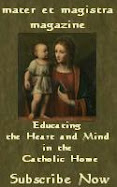This is the premise of the based-on-fact novel titled The Daughter's Walk
The solution? The mother has worked out a deal with some New York fashion moguls who want to spread the word about the new "reform dress" -- above the ankle dresses for women. This is a dress that many see as indecent (remember, it's the 1890s) but the fashion pundits want to encourage. The deal is that if the Helga Estby and her daughter Clara walk from Spokane (WA) to New York City within a set amount of time, gathering dignitaries' signatures as they go, the Estbys will earn $10,000 -- enough to save the farm, send the children to college, and better the lives of this immigrant family.
What would you do?
The book doesn't stop with this harrowing (true) journey these women take. The book continues with their return to Mica Creek, Washington and the family's reception of the women. The story, told through the voice of Clara, than takes a sharp turn -- Clara is ostracized and for 20 some years is denied her family for whom she sacrificed so much. Clara finds community, finds family, with two older women showing that we all need someone, that God never meant us to walk our earthly journey alone.
This is an amazing story. This is an amazing tale based on the actual walk the Estby women undertook. This is an amazing tale based on the daughter's actual rejection by her family when she returns to Mica Creek. This is an amazing tale, pieced together through family records, newspaper articles and family legends that Kirkpatrick weaves together to make a fabric of forgiveness, love, family and courage. With a bit of suffragette history thrown in, this really makes a great read. Kirkpatrick also does a wonderful job explaining the fur business (in all its many aspects), the coming of World War I and its impact on the homefront, and other work that respectable women of the early 20th century could do in the West.
Kirkpatrick has wonderful notes at the end that explain what was based on verifiable facts, what came from family reminiscences and what was pieced together as "probably happening" in the lives connected to Clara Estby. This is what I would call a living book ... a book where the author revels in her story and shares that joy with her reader.
I would highly recommend this book for high schoolers and above, especially those interested in American social history ... in the suffragettes' movement ... in the lives of immigrants ... in the stories of family who cling together in good times and bad.
As a side note: I particularly enjoyed the descriptions of early 20th century Spokane -- I went to Gonzaga University in Spokane and I knew the places discussed, the street names and the area. Very cool personal link.
Disclaimer: I received this book as part of WaterBrook Multnomah's Blogging for Books program. I received no other compensation and only was required to write an honest review of the book. The critique above is my honest impression of The Daughter's Walk




 ...
... 




Hi Mary,
ReplyDeleteI'm so glad the story spoke to you, a former Spokane-ite (is that a word?). Clara was an amazing woman and so was Helga. Thank you for reading and reviewing the book. Take care, Jane